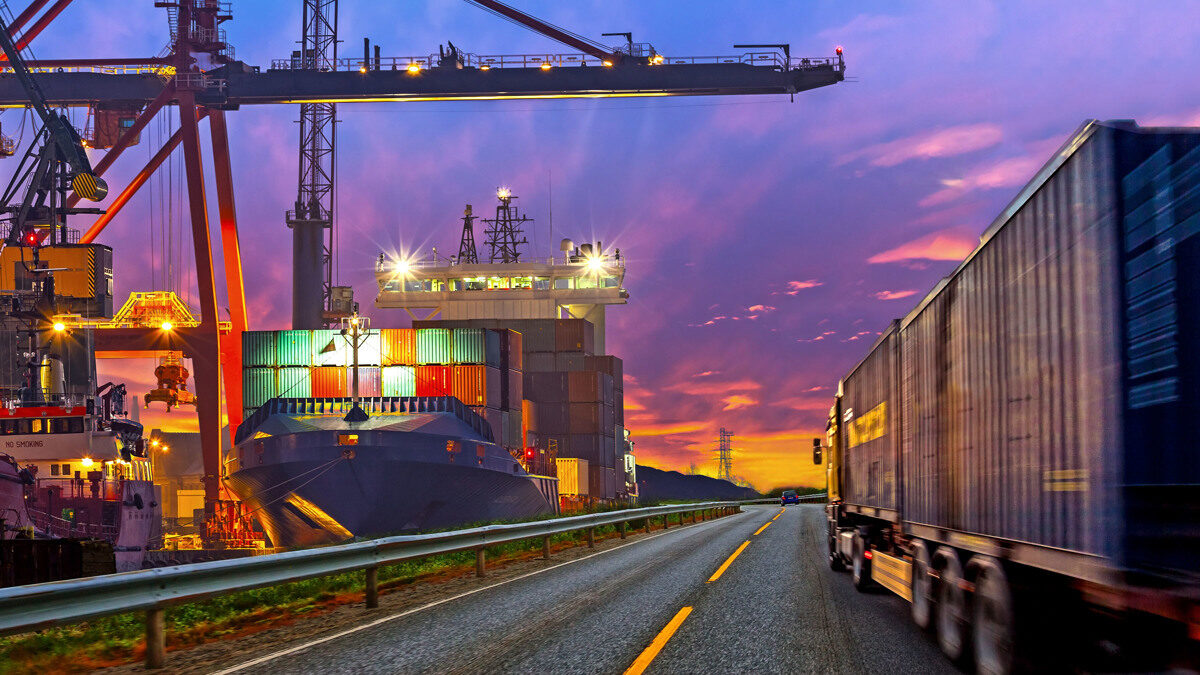How a Unified Logistics Approach Drives the Customer – Centric Supply Chain
What a year it has been! Glad to see the back of it… ‘New normal’… ‘Online schooling’… ‘Have you been vaccinated yet?’ Pandemic… Unprecedented… Zoom fatigue… three-day delivery isn’t fast enough…
I shudder to think how many times we have heard, read, or even spoken some or all of the above over the last 12 months.
It’s fair to say I love logistics. I’d be crazy not to love my industry after almost 25 years of designing and selling logistics solutions to customers all over the world, and every time it is about keeping the customer at the centre – there’s no other way to become their trusted supply chain partner than to walk many miles in their shoes and consider what the implications of change will do for them, and their customer.
Being part of an industry that is embracing change at an ever increasing rate is simply stimulating, keeping myself informed of ‘the next new thing’ to be able to relate this to my customer is an almost daily event, and I personally have embraced digitization to enable me to do this in an efficient way. It is massively rewarding being part of an industry constantly challenged by external factors, be it the working time directive in 1998 to SOLAS eVGM in more recent years, via one or two political trade wars and regional health concerns, and let’s not forget the Eyjafjallajökull volcanic eruption of 2010.
In 2020/21 our industry rises to the challenge once again, the COVID-19 pandemic and the hard but necessary lockdowns. After an initial blip of stock outs borne through panic buying, supplies flowed and critical/essential items remained available. My thanks to all of you who put yourselves on the front line to keep us moving.
Lockdowns changed buyer behavior, however, and likely forever. E-commerce channels have experienced massive upshifts in demand through 2020 (According to McKinsey, 10 years of e-commerce adoption was compressed into three months). The B2C online shopping model of smaller, more frequent, and faster shipments were in even greater demand and in pursuit of market share the logistics service providers (LSPs) needed to adapt, again.
The industry must focus on customer centricity now, but what does that really mean? To us at Blue Yonder, it is about enabling (giving) the best customer (user) experience possible, and to do that logistics must be unified; an overall management view that can drive improvement action.
This requires:
- Holistic thinking
- Increased visibility to unify processes
- Open technology platform
Supply chain technology innovation accelerates – big disparate data, engines for ingesting, analysis and interpretation, open API, machine learning and artificial intelligence are all aiding our problem solving capabilities. Credit must be given to the ever-emergent startups in the industry: innovating, disrupting, and augmenting existing capabilities and ultimately the end-user experience. Technology has advanced, consider the app-driven business, but we will only be truly effective if working together. Time for that word…COLLABORATION. Gone are the times of optimizing in silos; an optimized warehouse did not consider any positive or negative impact up or down the supply chain. It is critical to now connect these supply chain apps together to break down the siloes and assume a position (adoption) of open, interconnected technology.
Thinking holistically is something we began to learn in school, although we didn’t know it. Break a large problem down into smaller, more easily digested components; solve the components and then reassemble the overarching problem. Well, we’ve all been doing the very same in supply chain and logistics management every day – silos of problem-solving activity all part of the total chain. And herein is the problem. Silos. What we have all come to realize is that silos do not work to optimize the supply chain, in fact they do the complete opposite, and in demanding supply chain resilience silos cannot exist. Consider supply chain as a holistic entity and put the customer at the centre of it all. Understanding of the interdependencies and impact one part of the chain has on another will mean so much more than simply understanding the individual processes (silos); understanding how they relate to the customer even more so again.
The holistic thinking extends to the visibility of operations and processes. Bringing together a view of the entire supply chain in one place, one management dashboard, is where today’s LSP business needs to be, to meet the demands of now, and have flexibility for the future. We can deliver all this digitally, no more should we be handicapped (disadvantaged) by long-term forecasts using a snapshot in time set of assumptions for our planning. In a digital world the LSP adopting a holistic, unified view leveraging artificial intelligence, planning can be predicted and executed in real time, with flexibility – offering (delivering) improved service levels to customer
Unified Logistics, powered by our Luminate Logistics and Luminate Platform solutions, arms shippers and LSPs with the ability to seamlessly plan, optimize, and orchestrate supply chain execution. They can gain consumer confidence by truly delivering the right product, to the right place, at the right time, regardless of size.
Shippers and LSPs embracing this mind shift already have the jump on their competition; flexibility and adaptability meeting rising consumer expectation.
“Our collaboration with leading providers like Blue Yonder delivers big wins for shippers who are seeking a higher level of access, agility and transparency. What’s really exciting is that these real-time insights and automation are just the beginning of our work to help shippers better identify opportunities to save costs and enhance overall efficiency.” – Erin Van Zeeland, Senior VP & GM of Logistics Services, Schneider
To find out more about Unified Logistics and how Blue Yonder’s solutions offer an operational edge, visit our Unified Logistics homepage and read our latest Unified Logistics e-book.

